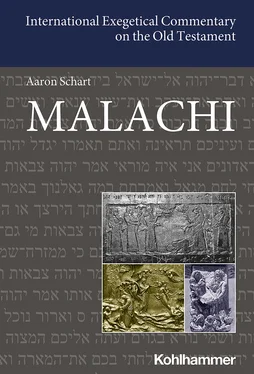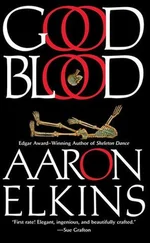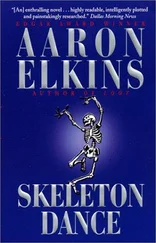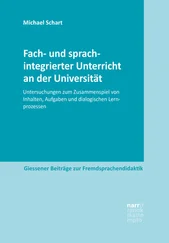John the Baptist Even if Jesus did not think so himself, his followers in any case found in the promise of a precursor a scriptural proof they could use to relate the appearance of Jesus and that of the Baptist. In this way, they honored John as an eschatological figure while at the same time subordinating him to Jesus.
The reception of the Jewish scriptures into the Christian Bible of the ancient church as the “Old Testament” accorded the Malachi document enduring canonical status as well. From the point of view of the Christian editors this was the last in the sequence of prophets that, as a whole, pointed forward to Christ as the Son of God.
The Historical Situation of the Malachi Document
Date Regrettably, the Malachi document contains very few indications that could permit a precise dating. We should keep in mind that the various levels of redaction must be ordered differently. If, to begin with, we look for indications that permit any kind of historical ordering, the following are usually cited:
– The references to double doors (Mal 1:10), to a היכל ( hêkāl , “temple edifice,” Mal 3:1), to a storehouse probably within the temple precincts (Mal 3:10), to the “Lord’s table” (Mal 1:7), and to the מזבח ( mizbeaḥ , “[sacrificial] altar,” Mal 1:7, 10) presuppose the rebuilding of the temple.
– Malachi 1:8 mentions a פחה, “governor,” though he remains unfortunately anonymous. In all probability this is the Persian provincial governor, though that Persian title of office was still in use in the Hellenistic period, as inscriptions on coins attest.
– Malachi 1:4 presumes that Edom has fallen. That national catastrophe must have been vividly present to everyone at the time of composition. It is usually associated with one of Nabonidus’s campaigns, ca. 552 BCE, in which he is also supposed to have conquered the Edomites. However, later dates should also be considered.
– There are some connections, both thematic and literary in nature, to Ezra and Nehemiah, but these are scarcely specific enough to permit certain dating. The Malachi document mentions neither the name Ezra nor Nehemiah; neither Ezra nor Nehemiah mention Malachi. In addition, it is uncertain whether the same problem of mixed marriages we encounter in Ezra 10 or Neh 13:23–27 stands behind Mal 2:10–16. The Malachi document, or at least its basic stratum, is usually dated before Ezra and Nehemiah because it is supposed that the conditions criticized in the document would no longer have existed after their reforms. But it is entirely possible that the global socio-cultural problems addressed by the Malachi document erupted repeatedly in the post-exilic period. 32
– Sirach 49:10 (ca. 180 BCE) refers to the “twelve prophets,” most probably a reference to the Book of the Twelve Prophets as a scroll. At that time the Malachi document would have been as good as finished. Still, there would have been minor additions in the course of the copying process: for example, the differing placements of Mal 3:22 [4:4 ET] in the MT and in the Vorlage to the Septuagint show.
– Malachi 1:6–2:9 presupposes legal formulations found in late additions to the book of Leviticus: for example, the list of cultically unacceptable animals in Lev 22:18–25. That scarcely offers any greater precision in dating because the Leviticus passages are themselves hard to date. In any case they must be placed later than the Pentateuchal Priestly source and so would probably belong to the fifth century.
On the whole the material written down in the basic stratum belongs to the years after the rebuilding of the temple, that is, around 500, during the reign of Darius I (521–486 BCE). 33We can easily imagine that after the decades of Babylonian rule during which the people had to live without a temple there were debates about how the renewed temple cult should best be integrated into the community’s life. In general Darius followed a policy of peaceful and harmonic union among the peoples under Persian rule and supported the erection of local sanctuaries. Ever since Second Isaiah had celebrated the Persian king Cyrus as the ruler established as king by Yhwh (Isa 45:1), Persian rule had been generally accepted as approved by Yhwh. It seems that only for a very brief time and to a very limited extent was the hope for a restoration of the Davidic dynasty associated with Zerubbabel (see Hag 2:23 and Zech 4:7–14). The temple priests, especially the high priest (Zech 3:1) appear to have exercised the greatest influence on community leadership.
References to the Hellenistic period The basic stratum was repeatedly reworked in the fifth century and probably in the fourth as well. There is scarcely any indication that individual passages assume the Hellenization that came in the wake of Alexander the Great. 34A major defeat of Edom, following a successful phase of advancement, must lie behind Mal 1:4–5. It is possible that such a thing happened in the Hellenistic period, but there is no concrete information about it. Jutta Noetzel thinks the idea that the “sun of righteousness” brings healing Mal 3:20 [4:2 ET]) may reflect Ptolemaic influence. 35We might also consider whether the tendency toward individualizing the judgment associated with the day of Yhwh (Mal 3:13–21) is due to Greek influence. The appendix, Mal 3:22, 23–24 [4:4, 5–6 ET], which points to a profound conflict between generations (v. 24 [4:6 ET]) fits with the tensions between those who accepted Hellenization and those who strictly rejected it. 36The Malachi document was the last to be incorporated in the Book of the Twelve, probably together with the Jonah narrative. The final text must have existed, at the latest, by about 180 BCE.
Economic situation The assessment of the economic situation is highly important for understanding the motivations of the prophet’s opponents. For example, we would like to know why those opponents were not paying their full tithe (Mal 3:10a). Were they in need, perhaps because of drought and insect infestation? Did they prefer to sell their produce themselves rather than surrender it to the temple personnel? Or did they interpret the state of the law differently from the prophet by, for example, calculating the tithe that was owed only in terms of agricultural yield and not of income from commerce?
Johannes Bremer has recently given a summary account of the economic situation of the province of Yehud in the Persian period. 37Agriculture was essentially based on the production of grain, olive oil, and wine. Harvests were limited by drought, pests (especially locusts), and plant diseases; all these are mentioned repeatedly in Joel, Haggai, Zechariah, and Malachi (Joel 1:4–20; Hag 1:10–11; 2:15–19; Zech 8:9–12; Mal 3:10–12). It is difficult to assess the extent and influence of the Persian tax system. Examination of archaeological evidence gives no indication of unusually large distinctions between rich landowners and poor farmers, but recovered coins are quite interesting. They reveal a change in the economy during the Persian period that was of substantive value. Coins enabled intensified international commerce as well as eased the development of investment. Anyone who had coins could succeed; those who could only pay in goods or silver were at a disadvantage. The province of Yehud received the right to mint its own coins. It is striking that most of the coins circulating in Yehud were small ones of little value. In spite of its minor economic achievements, the province of Yehud made use of the innovative method of payment in coin, which points to a high degree of economic efficiency.
Noteworthy among the indicators internal to the texts are occasional references to “economic thinking”: the prophet’s opponents seek “profit” (Mal 3:14) or acknowledge the Persian governor as the authority for judging the quality of products (Mal 1:8). The list of personae miserae in Mal 3:5 also is telling: alongside the traditional groups of widows, orphans, resident aliens, and Levites, this list also mentions hired workers as victims of oppression, 38an indication that the numbers of hired workers had increased sharply. That in turn may well imply that traditional family farms and businesses were under pressure to compete with larger economic units that employed wage workers. The remark that it is not the hired workers themselves but their wages that are being depressed is worth noting. This tells us that the productive workers in Yehud were under acute economic pressure and had to keep their payrolls low. At the same time references to innovative techniques, such as “fullers’ soap” (Mal 3:2), slash-and-burn agriculture (Mal 3:19, 21 [4:1, 3 ET]), calves in the stall (Mal 3:20), and the “refiner’s fire” (Mal 3:3) point to new methods of production. The prophet sides with those who see themselves as oppressed and appeals to the social laws of the Torah.
Читать дальше












